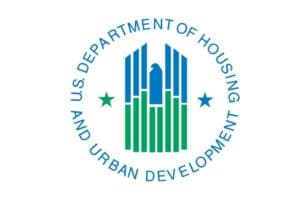The Low Income Investment Fund (LIIF) is a Community Development Financial Institution (CDFI) that provides financing to support affordable housing, with a focus on serving low-income and underserved communities. LIIF’s financing options help bridge the funding gaps in affordable housing projects by offering flexible and mission-driven loans tailored to each project’s stage of development. Here are the main financing tools that LIIF offers for affordable housing:
Predevelopment Loans
- Purpose: LIIF offers predevelopment loans to cover early-stage costs, such as architectural designs, environmental studies, permitting fees, legal expenses and other initial activities. These are critical, as many affordable housing projects require significant up-front work before securing permanent financing.
- Loan Terms: Typically, short-term (one to three years) with flexible terms to accommodate project needs; and
- Funding Amounts: Varies based on project size and needs, but often covers a large portion of predevelopment costs.
Acquisition Loans
- Purpose: Acquisition loans help developers purchase property or land for affordable housing development, allowing them to secure valuable sites before long-term financing is in place. LIIF often works in high-cost areas where property acquisition requires quick action;
- Loan Terms: Flexible terms with competitive rates; often structured to allow developers time to assemble permanent financing; and
- Funding Amounts: Varies widely, depending on the scale and location of the property.
Construction Loans
- Purpose: These loans provide funding to cover construction costs, including materials, labor and other development expenses. Construction loans are often issued alongside other sources of capital, with LIIF providing a critical portion to help projects move forward.
- Loan Terms: Short-term (often 18 to 36 months), with structured repayment options that align with the project’s completion and transition to permanent financing; and
- Funding Amounts: Varies based on the scale of the construction and the project’s financing stack.
Mini-Permanent or Bridge Loans
- Purpose: LIIF’s mini-permanent or bridge loans provide interim financing for projects that are not yet ready for long-term financing. These loans are designed to bridge gaps between construction and permanent financing or to provide temporary funds until LIHTCs or other sources are available;
- Loan Terms: Typically, three to five years, structured to help projects stabilize financially and achieve readiness for permanent financing; and
- Funding Amounts: Adaptable based on project needs, with the flexibility to meet timing gaps related to other capital sources.
Permanent Loans
- Purpose: LIIF also offers permanent loans that act as a long-term financing solution once construction is complete. Permanent loans can still provide larger loans and fill shortfalls in cases where market-rate financing is insufficient or too costly for affordable projects;
- Loan Terms: Longer terms (ten-plus years) with fixed or floating rates, tailored to ensure project affordability over time; and
- Funding Amounts: Based on the project’s income and expense forecasts and structured to ensure long-term viability.
Equity-Like Products and Subsidy Gap Funding
- Purpose: In addition to traditional debt financing, LIIF offers subsidy gap funding to address shortfalls specifically in affordable housing projects for low-income and underserved populations. These funds often operate as subordinate debt or forgivable loans, allowing greater flexibility in repayment;
- Loan Terms: Highly flexible terms; sometimes structured to require repayment only after other debt obligations are met; and
- Funding Amounts: Determined on a case-by-case basis, often tailored to maximize affordability in low-income communities.
Key Features of LIIF’s Project Financing:
- Flexible, Mission-Driven Terms: LIIF tailors its loan products to the needs of affordable housing developers, focusing on terms that support long-term affordability and financial stability;
- Integration with Other Funding Sources: LIIF’s products are designed to complement tax credits, grants and government programs, allowing developers to layer different funding sources to fully finance projects; and
- Focus on Low-Income and Underserved Communities: LIIF prioritizes funding projects in high-need areas, often providing critical financing that helps bring affordable housing projects to completion.
Application and Eligibility:
- Who Can Apply: Affordable housing developers, nonprofits and community organizations working in underserved areas;
- Application Process: LIIF requires detailed project proposals, financial documentation and a sustainability plan. Applications can be initiated through LIIF’s website or by contacting their regional offices; and
- Eligibility Requirements: Projects generally need to serve low- or very low-income populations and align with LIIF’s mission to promote community development and financial inclusivity.
LIIF’s financing solutions play a significant role in filling funding gaps and enabling affordable housing projects to succeed in challenging markets, especially where conventional financing may not be available or affordable. For more details, visit LIIF’s website or reach out to their affordable housing lending team.
